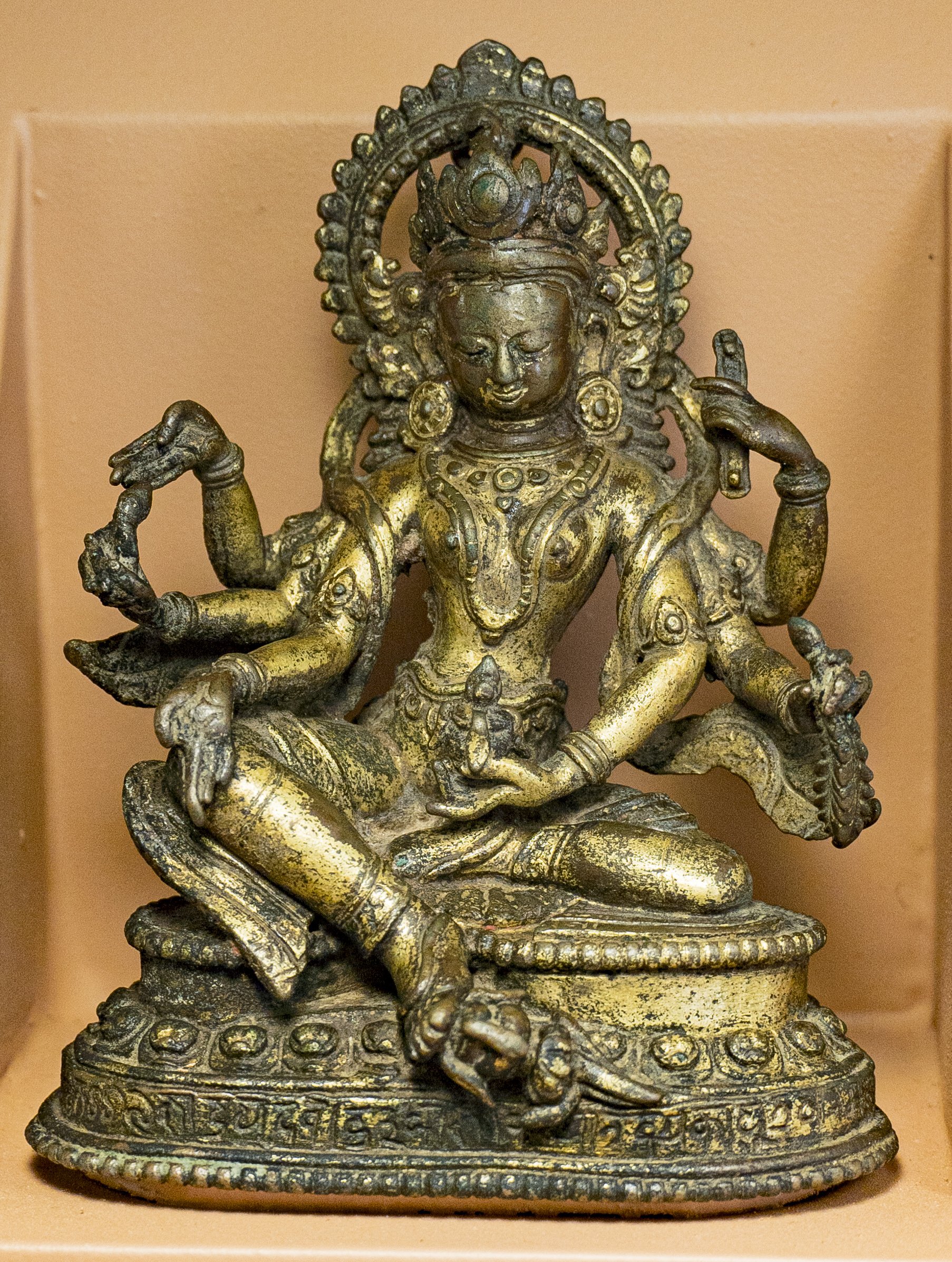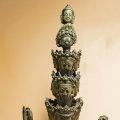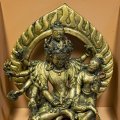Patan Museum (Nepal): photo 56
Photo 56 of 212 in Gallery: Patan Museum (Nepal)

Image title: Vasudhara (Nepal, 16th century)
Description of the photo
This Copper sculpture shows an image of Vasudhara, from the 16th century origination from Nepal.—Materials used: Copper, gilt.
Description: With only one head and two arms the “The One Holding the Treasure,” a Buddhist goddess of abundance, could not hold so many precious and life sustaining symbols—book of knowledge, sheaf of grain, spray of jewels, and auspicious water vessel-and still add expressive mudras which define her nature.
Notes: Why do gods have multiple heads and hands? In the later development of Hindu and Buddhist practice, known as Tantrism or, in Vajrayana Buddhism, “The Way of the Thunderbolt”, deities are given multiple heads and limbs to better express their complex personalities and their multiple functions.
Gallery information:
The Patan Museum is located on the Durbar square of Patan (Lalitpur/Lalitapura, Kathmandu, Nepal) which is associated Keshav Narayan Chowk (Keshavnarayan)—a form of Lord Vishnu. Being listed as a World Heritage Site, the whole of Durbar square is filled with exquisite temples, sculptures and other ancient structures, of which the ancient history history can be traced to the Malla Kings of Lalitpur. It is an important site for both Buddhism and Hinduism.
Photo details:
Date: 2019-12-02
Camera: SONY ILCE-6400
Exposure: 1/15
Aperture: f/4.5
ISO: 100
Focal length: 33mm
High resolution:
Download file
Size: 2.61 MB
Resolution: 1806 x 2394
© Photograph by Gabe Hiemstra.
License: CC BY-NC-ND 4.0

